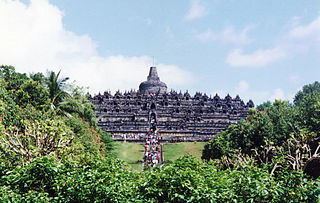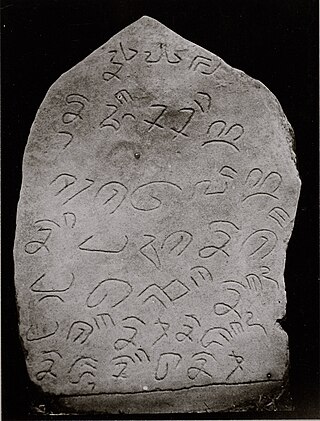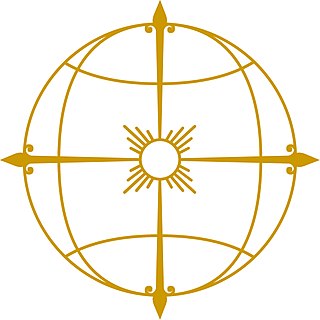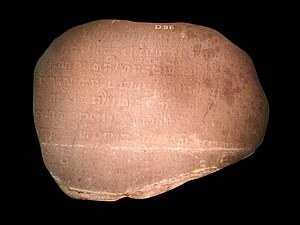
The Sunda or Sundanese are an indigenous ethnic group native to the western region of Java island in Indonesia, primarily West Java. They number approximately 42 million and form Indonesia's second most populous ethnic group. They speak the Sundanese language, which is part of the Austronesian languages.

The Sunda Kingdom was a Sundanese Hindu kingdom located in the western portion of the island of Java from 669 to around 1579, covering the area of present-day Banten, Jakarta, West Java, and the western part of Central Java. The capital of the Sunda Kingdom moved several times during its history, shifting between the Galuh (Kawali) area in the east and Pakuan Pajajaran in the west.

Pakuan Pajajaran was the fortified capital city of Sunda Kingdom. The location roughly corresponds to modern Bogor city in West Java, Indonesia, approximately around the site of Batu Tulis. The site is revered as the spiritual home of Sundanese people as it contains much of the shared identity and history of Sundanese people.
Sri Baduga Maharaja or Sang Ratu Jayadewata was the great king of the Hindu Sunda kingdom in West Java, reigned 1482 to 1521 from his capital in Pakuan Pajajaran. He brought his kingdom greatness and prosperity.

Hyang is a representation of the supreme being, in ancient Java and Bali mythology. The spiritual entity can be either considered divine or ancestral. The reverence for this spiritual entity can be found in the folk religions of Java and Bali, such as the Sunda Wiwitan, Kejawen, Kapitayan, and Gama Tirta. The realm where Hyang resides is called the Kahyangan, which is an Old Javanese term that means "the abode of Hyang", "part of Hyang", or "heaven".

Sunda Wiwitan is a folk religion and ancient beliefs adhered to by the Sundanese in Indonesia.

The Astana Gede inscriptions, also known as Kawali inscriptions, refer to six inscriptions discovered in the Kabuyutan Kawali area, Ciamis Regency, West Java; the main inscription bears the longest scripts. All of the inscriptions were written in the Old Sundanese language and Old Sundanese script. Although the inscription does not contain chandrasangkala (chronogram), the inscription was thought to have originated from the second half of the 14th century, based on the name of the king mentioned in this inscription.

The mythology of Indonesia is very diverse, the Indonesian people consisting of hundreds of ethnic groups, each with their own myths and legends that explain the origin of their people, the tales of their ancestors and the demons or deities in their belief systems. The tendency to syncretize by overlying older traditions with newer foreign ideas has occurred. For example, the older ancestral mythology might be merged with foreign mythology, such as Hindu, Islam, or Christian biblical mythology.

Wawacan Sulanjana is a Sundanese manuscript containing Sundanese myths. The title means "The Tale of Sulanjana", derived from the name of the hero Sulanjana as the protector of rice plant against the attack of Sapi Gumarang cow, Kalabuat and Budug Basu boars symbolizing rice pestilence. The Wawacan Sulanjana contains Sundanese local wisdom through reverence of rice cultivation in its tradition.
Medang Kamulan was a semi-mythological kingdom that is believed to be once established somewhere in Central Java according to Javanese mythology. It is either perceived as the predecessor or the actual historical kingdom of the Medang Kingdom. "Kamulan" is derived from the word "mula" in Javanese and means "origin", hence "Medang Kamulan" can be interpreted as "pre-Medang" or "Medang the origin".

Dapunta Hyang Sri Jayanasa was the first Maharaja of Srivijaya and thought to be the dynastic founder of Kadatuan Srivijaya. His name was mentioned in the series of Srivijayan inscriptions dated from the late 7th century CE dubbed the "Siddhayatra inscriptions", describing his sacred journey to acquire blessings and also to conquer neighboring areas. He reigned around the turn of the late 7th century to early 8th century, more precisely in the period between 671 and 702 CE.
Calcutta Stone or known in Indonesia as Pucangan Inscription is an ancient Javanese inscription written in Sanskrit and Old Javanese, dated from 1041 CE during the reign of king Airlangga of the Kahuripan kingdom, that explains some events and the royal genealogy of the king. The inscription more or less narrates the life story of King Airlangga, one of the greatest king in Javanese history, also explaining his lineage as the rightful ruler of Java, the successor of King Dharmawangsa of Isyana dynasty. This inscription was known as "Calcutta Stone", because it is stored in Indian Museum, Kolkata (Calcutta), India from 19th century until today.

King Siliwangi or Prabu Siliwangi was a semi-legendary great king of the Hindu Sunda kingdom before the coming of Islam in West Java.
Ligor inscription is an 8th-century stone stele or inscription discovered in Ligor, Nakhon Si Thammarat, Southern Thailand Malay Peninsula. This inscription was written and carved on two sides, the first part is called Ligor A inscription, or also known as Viang Sa inscription, while on the other side is called the Ligor B inscription written in Kawi script dated 775 CE. The Ligor B inscription was probably written by Mahārāja dyāḥ Pañcapaṇa kariyāna Paṇaṃkaraṇa (Panangkaran), king of Shailendra dynasty. This inscription was connected to the kingdom of Srivijaya and the Shailendra dynasty.
Horren inscription is a copperplate inscription measuring 32.6 cm length, 10.6 cm width, discovered in Southern Kediri, in Campur Darat village, Tulungagung, East Java. Initially this inscription was thought to originated from Majapahit period. The examining of the style and linguistic structure this inscription appears to be closer to King Airlangga period of Kahuripan.

Kebonkopi II inscription or Pasir Muara inscription or Rakryan Juru Pangambat inscription is the oldest inscription that mentioned the toponymy Sunda dated from 854 Saka, discovered in Kebon Kopi village, Bogor, near Kebon Kopi I inscription, and named as such to differ it from this older inscription dated from Tarumanagara era.
King Niskala Wastu Kancana also known as Prabu Raja Wastu or popularly known as Wastu Kancana was one of the great kings of the Sunda Kingdom reigning throughout most of the 15th century. He was the younger brother of Princess Pitaloka.

The history of Sunda Kingdom spanned almost a millennium, between 7th to 16th century. It is not sure however, whether the Sunda Kingdom was actually a continuous polity or not, nor whether its rulers belongs to a single continuous lineage of dynasty or not. This is because the scarcity of evidences, historical records and archaeological findings that plausibly connected to this kingdom.

Old Sundanese is the earliest recorded stage of the Sundanese language which is spoken in the western part of Java, Indonesia. The evidence is recorded in inscriptions from around the 12th to 14th centuries and ancient palm-leaf manuscripts from the 15th to 17th centuries AD. Old Sundanese is no longer used today, but has developed into its descendant, modern Sundanese.

Kapitayan is a Javanese monotheistic folk religion native to Java since the Paleolithic. Locally, it is referred to as "the monotheist ancient Javanese religion", "ancestral monotheist religion", or "Tiyang Jawi (Javanese) religion" to differentiate it from Kejawèn.














